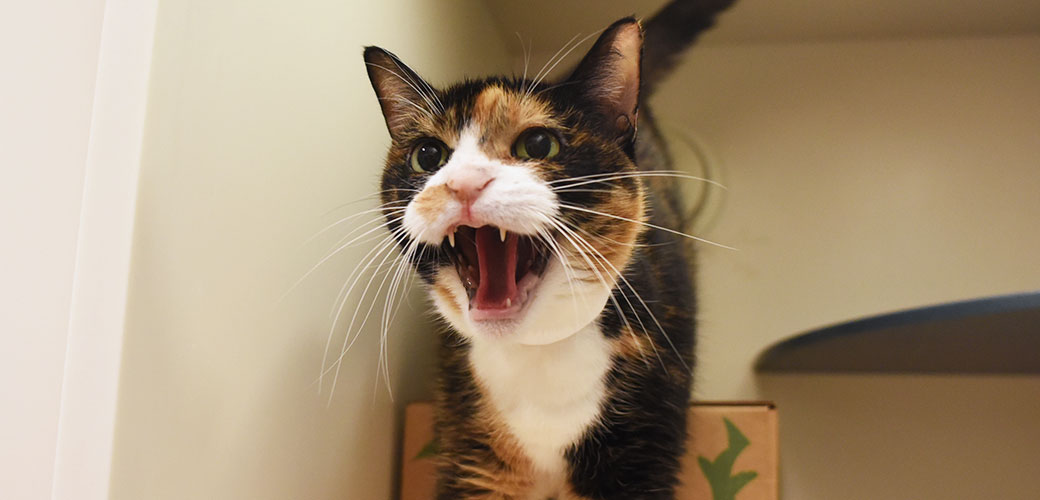:strip_icc():format(webp)/cute-balinese-cat-in-basket-at-home--top-view--fluffy-pet-1289382619-4019e725b10e4613bbba5b1058a76ec4.jpg)
Cats generally like to listen to us, but this doesn’t always come naturally. Just as we have to learn to understand what the cat is saying. Cats communicate both verbally and non-verbally, so it can be nice that you also understand what your cat wants or how he feels. Do you speak a little cat language already?
Verbal cat language
Meowing
This is the most well-known sound among cat languages. Yet a cat can meow in many different ways. For example, they have a short and long variety. When a cat meows short, it is greeting someone. Cats meow long when they want attention or disagree with something. You will hear this, for example, when your cat wants to eat. When a cat meows shrilly and screeching it’s very scared or in pain.
Chattering
Chattering, clattering teeth or chirping. Everyone has a different name for the “click-like” sound cats make. You will probably have heard this sound from your cat when he has spotted a bird or insect. He is very concentrated and even a little tense, but mostly very excited that he has spotted a prey.
Growling
When a cat is very restless or senses danger, he growls. By growling the cat wants to look threatening to others. Cats often do this when they want to chase away an enemy.
Blowing
Blowing is a threatening gesture. It’s therefore wise to take some distance from your cat when he does this. He feels uncomfortable or threatened. This is often accompanied by flattened ears, a fur that stands up and a high back.

Non-verbal cat language
To communicate, cats also use a lot of body language. If you know what your cat means by this, you can avoid miscommunication. Especially with his tail! You can easily see what mood your animal is in.
Relaxed
When a cat pricks up his ears and points his tail downwards it means he is relaxed. You can also see this at his whiskers. These are relaxed and slanted downwards.
Greetings
You have probably seen this often when you come home and your cat sees you. His tail goes up and he pricks his ears. With this behavior your cat wants to greet you and he shows you that he is in a good mood.
Anxious
When your cat keeps his ears flat back, whiskers pointed forward, tail down and has a high back, it means he’s anxious. It could be that he sees danger or feels threatened.
Attack
When a cat is about to attack, it sinks through its paws and its tail is pointed upwards. Above all, do not get too close if your cat is going to attack.

Angry
An angry cat can be recognized by its stiff back and upright tail and fur. This is the signal that your cat is anxious and aggressive. In this situation, it’s wise to leave your cat alone for a while until he has calmed down.
Purring
You will probably see this cat behavior a little more often. Cats usually purr when they are happy and feel good. It’s also possible that cats purr because they are in pain or feel uncomfortable. This is often accompanied by a certain body posture.
Communicating with your cat
It’s difficult for a cat owner to know how to communicate with his cat. After all, cat behavior is very different from human behavior. Therefore, it can be nice if you know how your cat behaves and how he communicates. The most important thing to know is not to punish your cats. They are sensitive to stress and can become fearful of their owner when punished.
You can reward a cat when he does something right. You can do this with a cat treat or a hug or stroke over his head. If a cat is not doing something right, show him how it should be done and reward him for that. In addition, consistency in cat language is very important. This way your cat also knows when you correct or reward him. Especially kittens need proper communication and education. It’s all new to them and they do not know what is allowed and what is not.
Source: https://www.prinspetfoods.com/advice-info/cat-language-learn-to-understand-your-cat
